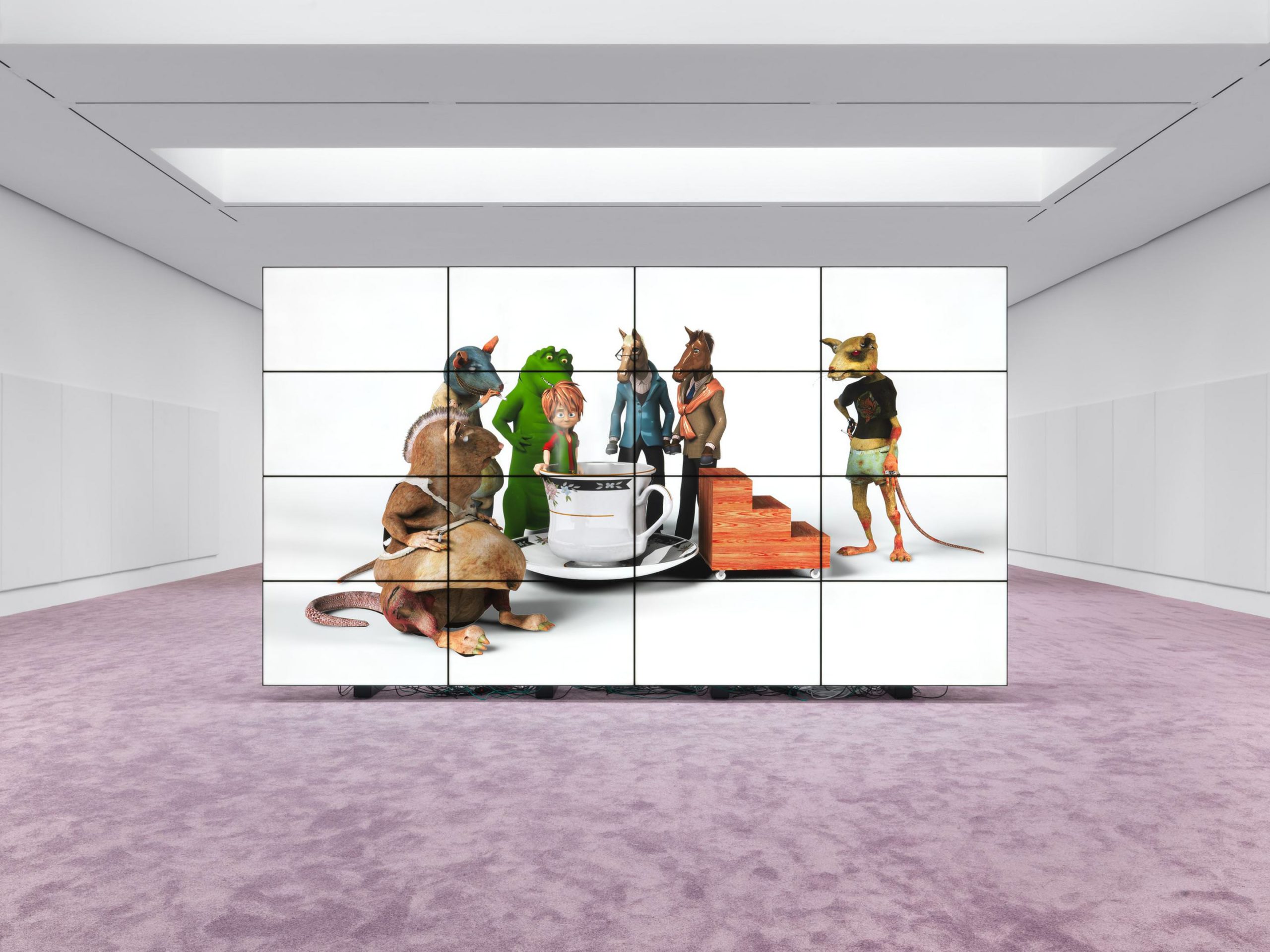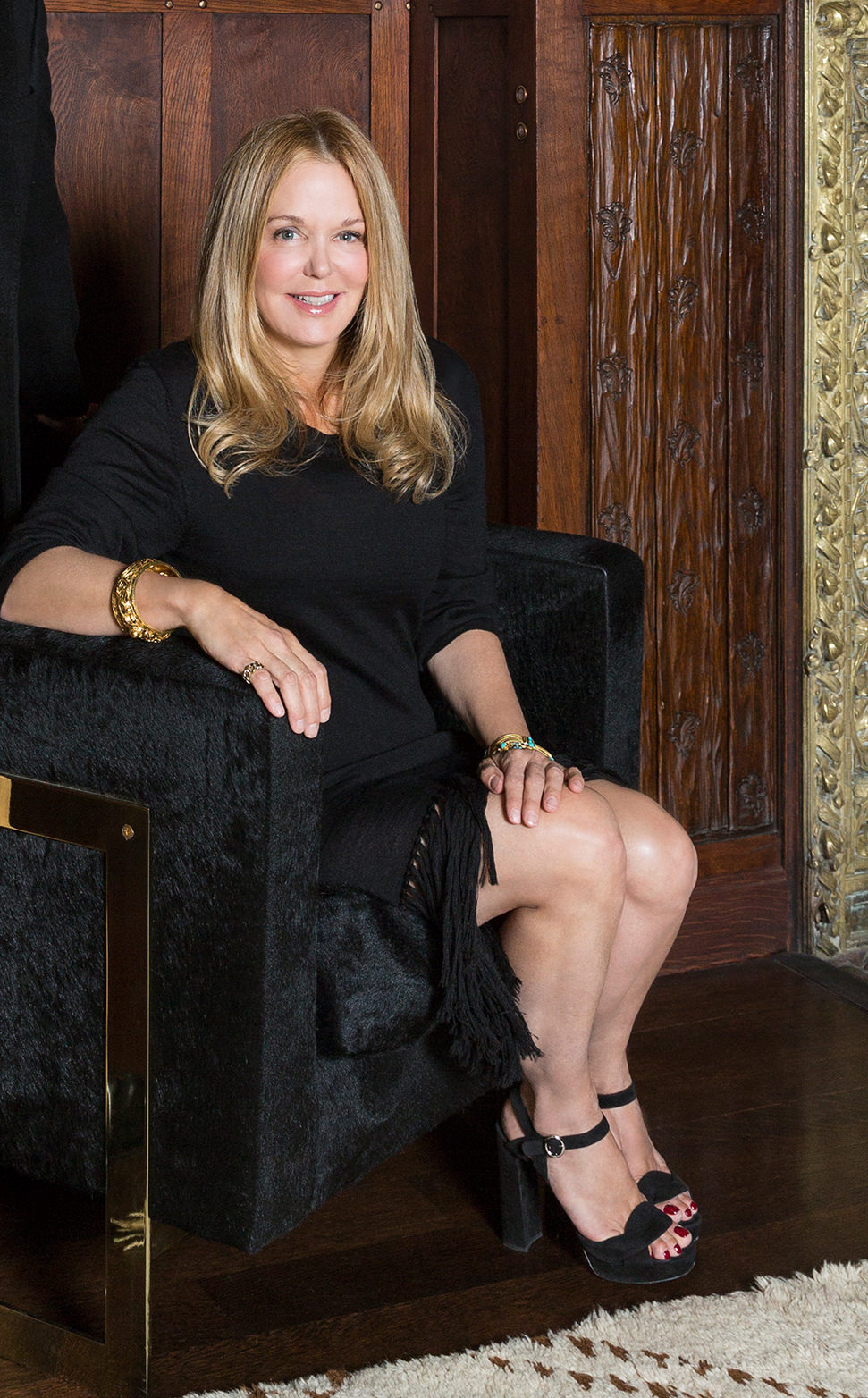This spring, new work by Carroll Dunham will be on view through June 16 at Gladstone Gallery’s 24th Street location. The large paintings, a continuation of the artist’s latest “Wrestler” series, feature muscular male figures in acrobatic stances against bright backdrops dotted with a curious dog here or an ominous swarm of black birds there. In advance of the show’s opening, Whitewaller caught up with Dunham about the active positions he was first interested in capturing.
WHITEWALLER: What was the starting point for your “Wrestler” series?
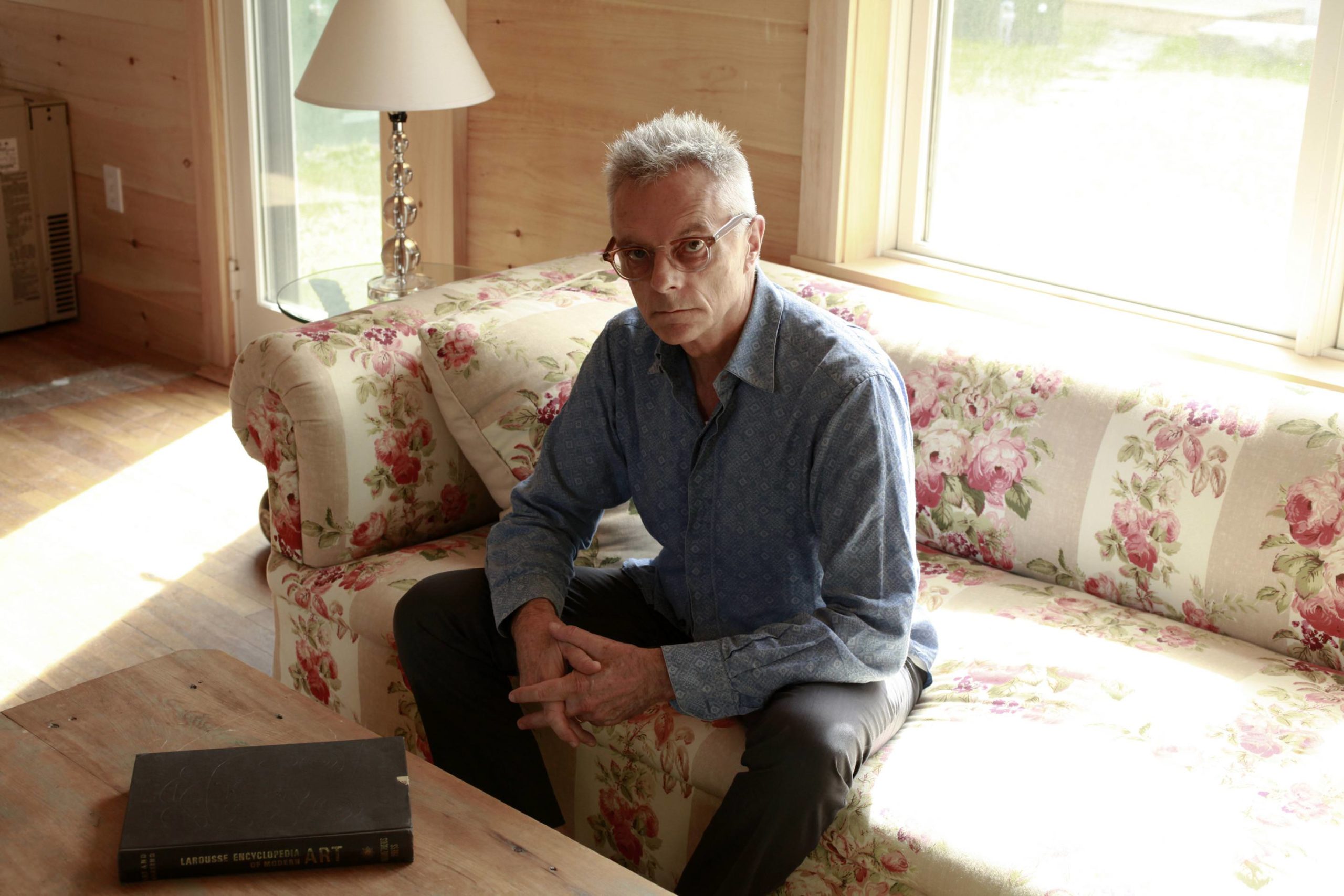
Photo by Laurie Simmons. Courtesy the artist and Gladstone Gallery, New York and Brussels
CARROLL DUNHAM: I began with drawings exploring this subject about three years ago. I was reaching the end of a long period working on the subject of female bathers, and wanted to bring images of male humans into my work.
WW: What made you want to visually explore this masculine struggle?
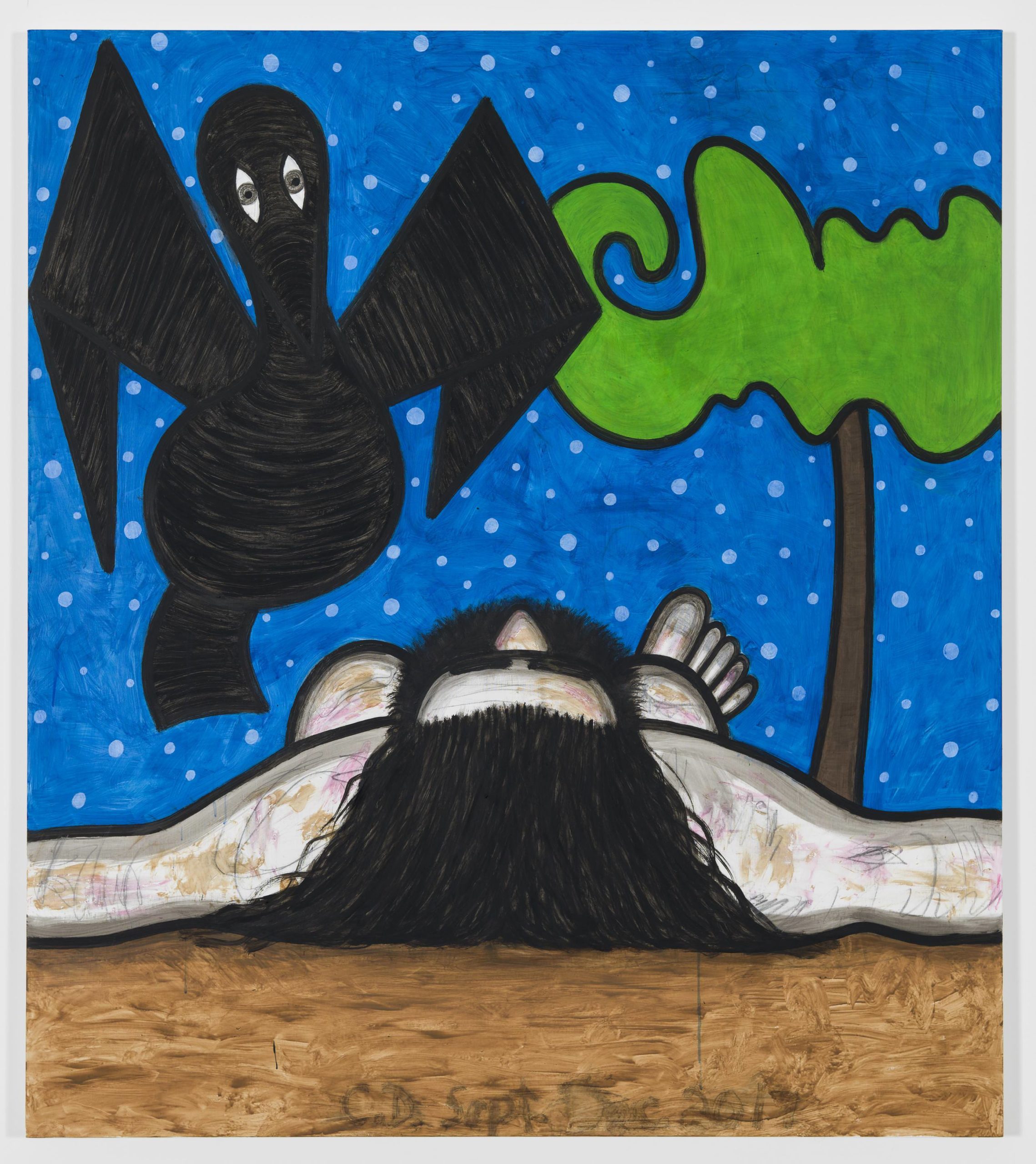
Carroll Dunham Left for Dead (2), 2017 Urethane, acrylic and pencil on linen 52 x 46 inches (132.1 x 116.8 cm) 56 5/8 x 50 x 5/8 inches (143.8 x 127 x 1.6 cm) framed
CD: Wrestling came to me as an archetypal activity of boys and men, also much represented in art history over a long period of time. I was more interested in the spatial and structural possibilities (two figures in contorted and unusual positions) than the dramatic or narrative aspects, although those levels have become more vivid to me as I’ve gone deeper into the subject matter.
WW: How did you want images of the female figure, trees, or dogs to play a part in the composition?
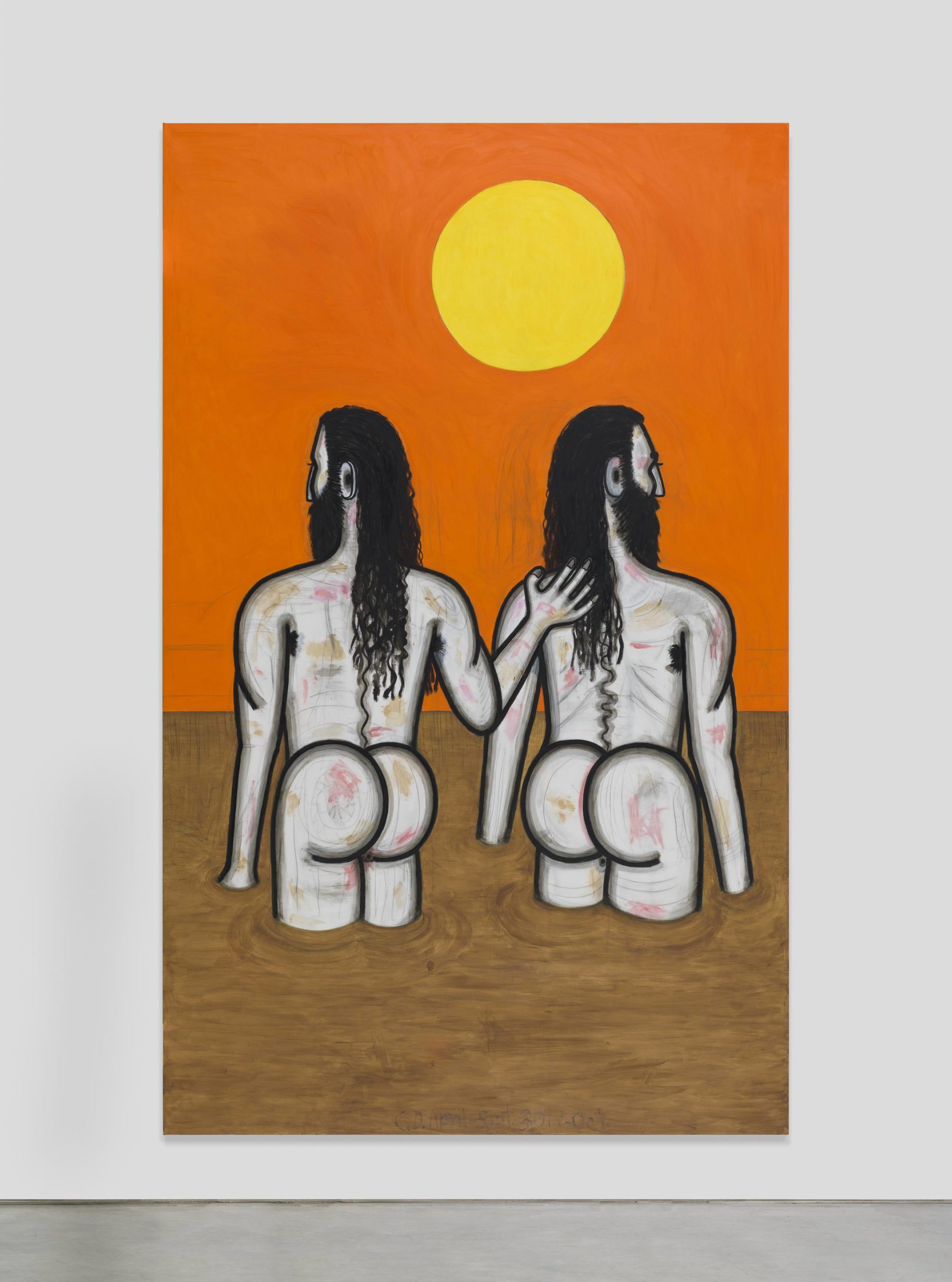
Carroll Dunham Mud Men, 2017 Urethane, acrylic and pencil on linen 100 x 62 inches (254 x 157.5 cm) 105 3/4 x 67 x 5/8 inches (268.6 x 170.2 x 1.6 cm) framed
CD: All these different characters help define the world that’s being presented in the paintings. I have been surprised to find that the images of animals seem to have almost more personality than the humans do.
WW: What role does drawing play in your practice? Does every painting begin as a drawing?
CD: Drawing is where I do my primary research. I make a lot of small, informal pencil drawings that help me initially to understand how an intuition might become an image. There are not necessarily specific drawings that correspond to each painting, but the general vocabulary of a group of paintings is well established in drawing. I also use drawings to plan the compositional structure of the larger and more complex paintings.
WW: You’ve described previous series as set in pre- or post-civilization paradise. For this series, do you imagine the same kind of setting?
CD: Yes. It is a landscape space with a reductive atmosphere. I’m not sure “paradise” applies, but it seems to be emphatically devoid of technological artifacts, with the exception of wooden clubs.
WW: You’ve said that you like to try and let your work take you along, gravitating toward wherever your imagination leads. How do you set yourself or your studio up to let that happen? How do you keep distractions or narrative at bay?
CD: I keep my studio neat and organized, which allows me to focus on the mess in my mind. Once I am involved in a group of paintings I think about the variations within it in extremely dry, “formal” terms, and in terms related to my working process. Any implications of narrative content emerge from these variables rather than the other way around.
WW: Is there a painting in the show that was particularly challenging for you for some reason?
CD: Any Day was the most demanding both psychologically and technically. It is a large painting, spatially and chromatically relatively complex, and also is a kind of summing up of many of my past and recent interests. This sort of thing always brings an element of resistance along with it.
WW: Is there a work you’d like to keep just for you?
CD: The honest answer is both all of them and none of them. The result will no doubt fall somewhere in between.





